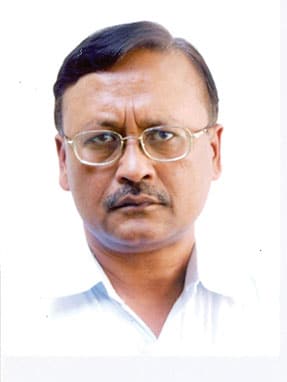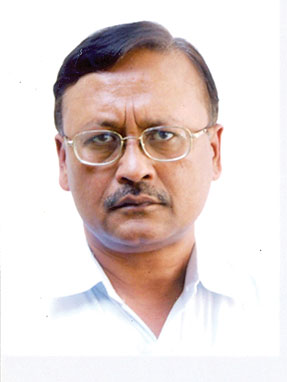Technology
We Have Solved The Problem Of Biopiracy 100 Percent

Dr V. K. Gupta, Director of the Traditional Knowledge Digital Library, explains why the Indian approach to biopiracy has been so effective.
| How does the Traditional Knowledge Digital Library address the problem of biopiracy?
Basically what was happening, multinationals, or whoever wanted to appropriate our knowledge would take assistance from someone who understands these books — Ayurveda in Sanskrit, Unnani system of medicine in Arabic, Persian, Urdu and Siddha system in Tamil. They would translate these books and convert them into international patent formats and file it at an international office. A patent can be granted if there is a novelty. And if something already exists in printed form, obviously there is no novelty. But the people at the international level — the Japanese patent examiner, the American patent examiner — did not have access to these books and even if they had there is no way they would have understood them. So what we have done from our end is to bridge this gap. Whatever a misappropriater is using, we have converted into five international languages — English, Japanese, German, French and Spanish — and we have converted these books into digital format. We’ve also put classification symbols of international patent classification and developed new classifications also. Now TKDL is as modern a database as the modern patent databases. Once we give access to an examiner of USPTO or EPO, the examiner is at same level as the misappropriater. Now he can basically read on his computer screen in a German patent office, the Sanskrit shloka in German and retrieve it in a manner in which German patent database gets retrieved. Now he cannot be fooled.
We have done several studies 2000, 2003, 2005, 2008 and 2009. Our most conservative estimate is that every year 2,000 wrong patents based on Unani, Ayurveda and Siddha were granted. Now we entered into an agreement with EPO in February 2009. In August and September we found 36 cases concerning the Indian system of medicine and we filed evidence with EPO. In two cases EPO noted the evidence and in a matter of 2-3 weeks set aside their earlier intention to grant the patent. In seven cases the applicants have already withdrawn their 4-5 year old applications and the balance 25 cases or so we are confident that they will be rejected or the applicants will withdraw. There has also been a drastic fall in the filing of patent applications in the Indian system of medicine. Now MNCs have realized that they can’t get a patent. So from September 2009 to January 2010 we’ve seen a 44 percent reduction in the filing of applications. During this period not a single patent was granted. In earlier cases, the soybean case people fought for 13 years at EPO and spent a few million dollars. Enola bean case in the U.S. took 10 years and huge expenditure by the government of Mexico before they could get it cancelled. Now we can cancel a patent based on an email at zero cost to us. We have an agreement with the US, UK and German patent offices. I guess we will do such agreements with other major patent offices. Are there any patent reversals in the US? We have identified 31 cases and in future when an application comes, the examiner will take cognizance. But these 31 cases have already crossed the examination stage so we will be utilizing the provisions of third party filing. We intend to file all these cases and I am sure all these 31 patents will get rejected. What are examples of some patents that have been reversed? Another case is a cancer treatment using the pistacia vera by an Italian firm. They filed application in 2004. February 2009 the EPO decided to grant the patent. On July 9 we submitted our application. On July 14 the intention to grant patent was set-aside in a matters of five days. Can you do the same with US patents? We intend to do so. In the next 15 to 20 days we should be able to file these and the result will come in the next 3 to 4 months. Why is your focus on America and Europe? The US and Europe are the largest patent offices and they have the largest number of multinationals. So we won’t start solving this with Uganda. We will start with the most difficult first. It was difficult to get them to agree to this approach. We started discussions with the patent offices in 2005 and in 2009 after four and half years both of us could agree. If you convince them you have convinced the world. Initially these cases were fought and won and so they became famous, but you can’t spend millions of dollars on 2,000 cases every year. It is ridiculous. That is why we have evolved the TKDL mechanism. In the last 10 years I am sure 20,000 cases like basmati and neem have happened and the patents have been granted. From 2009 onwards we want the global community to understand this and rectify the past wrongs. We are attempting that also without going through complex legal procedures to rectify these wrongs. Nine patents have been reversed on the basis of the TKDL basis by EPO. How many reversals occurred through the process of legal litigation? Several countries have tried to fight. India fought three cases. On neem we spent a million dollars and it took 10 years. Mexico’s Enola bean case took 10 years. Some countries have attempted, but at best people can fight one case, two cases. It goes on for 10 years, 15 years and the legal costs are enormous. Maybe people may have got 15 to 20 cases reversed through the complex legal procedures. With TKDL, in 2010, we may get 250 cases reversed at zero cost to us. If knowledge is in the public domain then it is open to everybody for use…. The moment someone takes a patent it means that it is his exclusive knowledge, which can be denied to anyone else to use in that territory. That is piracy. Use of knowledge in the public domain to any citizen in the world is permitted and there is nothing wrong in it. But isn’t there some criticism that even this can harm indigenous groups? There are two issues in this. One of the demands of the developing countries is that traditional knowledge should also have positive rights, the way technology does. There are people who have nurtured it so they should get benefit from it and that is where the issue of disclosure requirement in trade has come in. Similarly, a Convention on Bio Diversity is being debated. It is like Ayurveda is a national Indian heritage, so if any other country wants to use it the advantage should go to India. If that becomes the rule, the game will completely change, but presently utilizing any knowledge in the public domain is not illegal. Biopiracy also involves knowledge that is outside the patent system. Basically biopiracy is completely addressed. As far as India is concerned we have solved the problem of biopiracy 100 percent. But getting a positive right for India on Ayurveda that is an issue of developing a positive rights legal framework for traditional knowledge. So there is no consensus either on resolving biopiracy at an international level or a legal framework on the protection of traditional knowledge. The debate has been going on for 15 years. It may go on for another 20 years. There is enormous vested interest for a few countries that are not permitting a solution and it is unlikely they will permit one in the near future. So we are happy that at least half the problem we have solved. On the other half, we are in the process of working on some similar innovative mechanism. Basically it is a question of creating new intellectual property. TKDL is a huge source for creating a whole lot of new medicines and that is what we may be attempting in a few years — a large project, a mega project on creating 2,000 new medicines from TKDL. Then we solve both problems. Simultaneously we continue to fight at the international level for a legally binding framework. But that is very far fetched. What do you say to advocates of bioprospecting who say that the scientific use of plants is good for society? It is good and it must be done. Either you screen millions of species yourself, or if you want to take a lead from a tribal group in Uganda then you must see that those people are benefited. How can you make all the money yourself? Like this gentleman who went to Mexico and took a few bags of yellow beans and took a patent and stopped all Mexican farmers from growing yellow beans. This gentleman did nothing. That is not acceptable. This piracy how can anyone accept? At this time they are getting away because the other 130 countries have not devised a system like TKDL. If other 130 countries also devise their own TKDL based on Indian expertise then this business of piracy will be simply stopped. Have you done an estimate on how much monetary value there might be in this traditional knowledge? This is impossible for anyone to estimate. One single molecule is $1.5 billion and through the traditional knowledge route it costs $1 million to develop a germ or $5 million at best so $1,500 million v $5 million. In TKDL we have 350,000 new medicines. Imagine the value. It’s a multitrillion economy. If we work on that, the drug and pharma sector, apart from generic drugs, could be a trillion dollar economy. We cannot say how long it will take. But if you are asking the potential, that is the potential. |


You must be logged in to post a comment Login